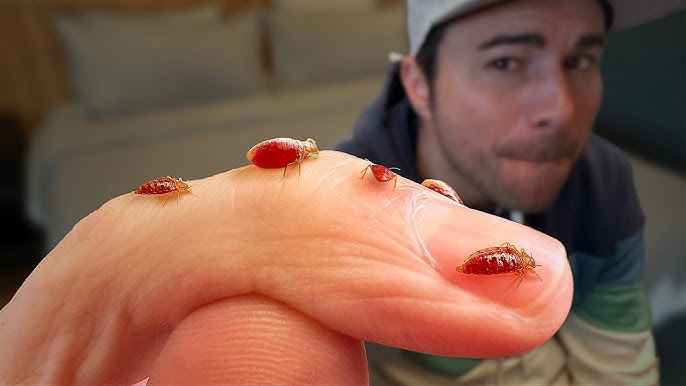Bed bugs are small, elusive pests that can be difficult to detect. If you’re wondering what bed bugs look like and how to identify them, you’re not alone. Knowing what these insects look like can help you spot an infestation early and take steps to address it. In this post, we’ll provide a detailed description of bed bugs, common signs of infestation, and what you can do if you find them in your home.
What Do Bed Bugs Look Like?
Adult bed bugs are small, typically about the size of an apple seed, with distinct features that make them identifiable:
- Size: Around 4-5 mm long (similar to a grain of rice).
- Shape: Oval and flat when unfed, but their bodies swell and become more rounded after feeding.
- Color: Reddish-brown when unfed and darker, almost purplish, after a blood meal.
- Other Features: Six legs, two antennae, and no wings. Bed bugs do not fly or jump but are known for their quick crawling speed.
Bed Bug Eggs and Nymphs
Along with adult bed bugs, eggs and nymphs (baby bed bugs) are often found in infested areas:
- Eggs: Tiny, white, and about 1 mm long. They can look like tiny grains of salt and are often laid in hidden places such as mattress seams or cracks.
- Nymphs: Smaller and lighter in color than adults. They go through five growth stages, each time shedding their exoskeleton, which you may find as evidence of an infestation.
Where to Find Bed Bugs
Bed bugs are experts at hiding, but there are common places to check:
- Mattresses and Box Springs: Look at seams, tags, and any cracks or crevices.
- Headboards and Bed Frames: Bed bugs often hide close to where you sleep.
- Furniture and Upholstery: Couches, chairs, and any upholstered furniture can be hotspots.
- Baseboards and Electrical Outlets: Bed bugs can fit into very narrow spaces and often hide along walls or outlets.
Signs of a Bed Bug Infestation
If you’re unsure whether you have bed bugs, look for these common signs:
- Bite Marks: Bed bug bites typically appear in clusters or a line pattern, often on exposed skin such as arms, neck, and face.
- Rust-Colored Stains: Bed bugs leave behind dark stains, which are blood from feeding or fecal matter.
- Shed Skins: As nymphs grow, they shed their exoskeletons, which are small, translucent shells.
- Musty Odor: A strong, musty smell can indicate a large infestation.
What to Do if You Find Bed Bugs
If you suspect bed bugs in your home, quick action is crucial to prevent the infestation from spreading:
- Contact a Professional Pest Control Service: Bed bugs are notoriously difficult to eliminate on your own. Professional pest control can identify the full extent of the infestation and treat your home thoroughly.
- Wash Bedding and Clothing: Wash all fabrics in hot water and dry them on high heat to kill any bed bugs or eggs hiding there.
- Vacuum Thoroughly: Vacuum your mattress, furniture, carpets, and floors to remove bed bugs and eggs, and dispose of the vacuum bag immediately.
Preventing Bed Bug Infestations
To avoid future infestations, consider these preventive steps:
- Inspect Secondhand Furniture: Before bringing used furniture into your home, inspect it closely for signs of bed bugs.
- Use Protective Mattress Covers: Bed bug-proof covers on mattresses and box springs can prevent bed bugs from settling in.
- Be Cautious When Traveling: Check hotel mattresses and furniture for signs of bed bugs. After traveling, inspect and wash all clothing before returning items to your home.






+ There are no comments
Add yours